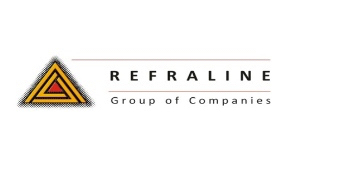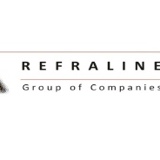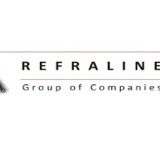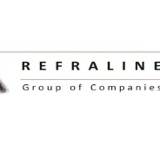Title Page
-
Document No.
-
Audit Title
-
Client / Site
-
Conducted on
-
Prepared by
-
Location
-
Personnel
Scope of Audit:
-
Comments:
Opening meeting:
-
Complete attendance register
-
Signatures of attendees:
-
Objectives of the audit.
-Not to reject the system
-re-currence may point to system failure
- cant cover all aspects.
-where no non-conformance detected does not mean non exist sample of activities -
Review audit programme:
-
Company representative:
-
Function of company representative:
-
Time of closing meeting:
-
Confidentiality:
-
Reasons for aborting audit:
-
Invite questions:
-
Overview of organisation:
ACCREDITATION REQUIREMENTS EVALUATION CHECK SHEET
1. The Training provider is registered according to the applicable legislation.
-
1.1 Registration with Department of Education.
-
1.2 Registered as a legal Entity
2. TRAINER, ASSESSOR , AND MODERATOR DETAILS
-
2.1 Details of trainers, qualifications and experience and learning programme each trainer is delivering is submitted
-
2.2 Details of constituent Assessor ,qualifications and experience and learning programme each assessor is assessing is submitted
-
2.3 Details of Constituent Moderators, qualifications and experience and registration proof is submitted
3. SAFETY AND HEALTH PRECAUTIONS (Training providers who offer training in electricity unit standards should provider a safety policy on electricity)
-
3.1 Occupational Health and Safety policy is in place and includes a contingency plan
-
3.2 Public liability insurance is available
-
3.3 Fire and theft insurance is available
4.QUALITY MANAGEMENT SYSTEM POLICIES AND PROCEDURES
-
4.1 Policy Statement is in place outlining the organization education training development aims, objectives.
-
4.2 Quality management systems that outlines the procedure that implements quality management in the organization, including procedures on document control that outlines the identification, tracking and control of documents is in place
-
4.3 Quality Management System review policy and procedure that ensures that the QMS policies and procedures are implemented effectively is in place and regularly updated and Reviewed.
5. MONITORING AND EVALUATING METHODOLOGY POLICIES AND PROCEDURES
-
5.1 Acceptable monitoring and evaluation methodology for revising, and reviewing and updating of learning programmes is in place.
-
5.2 Evidence exists for reviewing and updating of training material
6. POLICIES AND PROCEDURE FOR THE MANAGEMENT OF ASSESSMENT
-
6.1 Assessment design policies and procedures exist
-
6.2 Assessment policies and procedures outlines the form of assessments that are used and how they are managed is in place.
-
6.3 Moderation policy and procedures outlining how moderations are to be used and managed is in place
-
6.4 RPL policy is place and in line with NQF requirements
-
6.5 Policy is place to review assessment instruments
-
6.6 Policies and procedures are in place to enable learners to appeal the outcomes of assessments and delivery
7. ADMINISTRATIVE FINANCIAL POLICIES AND PROCEDURE
-
7.1 Policies and procedures for the capturing and maintenance of learner information and records compiles with the requirements of the NLRD
-
7.2 Proper financial resources processes is in placeto sustain and conclude all contractual obligations in terms of training provision throughout the accreditation period (e.g. financial statements)
8. POLICIES AND PROCUEDURES FOR THE OFF-SITE PRACTICAL AND WORK SITE MANAGEMENT
-
8.1 Policies and practices for the management of off-site practical or work-site components to ensure valid learning experience are in place.
9. POLICIES AND PROCEDURES FOR LEARNER SUPPORT AND GUIDANCE
-
9.1 Learner support policy in place (Before enrolment in program, during learning program and after completion)
-
9.2 Career path support provided
-
9.3 Support material for learners available
-
9.4 Learner counseling available
-
9.5Translation support available
-
9.6 Support for learning with special needs is available
10. HUMAN RESOURCES POLICIES AND PROCEDURES
-
10.1 The following policy documents are confirmed to be in place
-
Staff selection and recruitment
-
Equity policy
-
Communication policy
-
Staff development
-
Disciplinary procedures
-
Grievance procedures
-
Code of conduct
ACCREDITATION (SCOPE OF TRAINING, INFRASTRUCTURE & FACILITIES)
ACCREDITATION REQUIREMENTS EVALUATION CHECK SHEET – (site visits)
1. SAFETY AND HEALTHY REQUIREMENTS
-
1.1 Person responsible for Occupational Health and Safety has been appointed.
-
1.2 Occupational Healthy and Safety policy has been communicated to Staff.
-
1.3 Learners are informed of the Occupational Health and safety policy.
-
1.4 Dangerous/hazardous material is clearly indicated
-
1.5 First aid boxes in work area are available and visible
-
1.6 Safety signs in work area are available and visible
-
1.7 Evacuation routes are clearly demarcated
-
1.8 OHS Act available on site
-
1.9 No smoking signs on site
2. EQUIPMENT AND FACILITIES FOR TRAINING (CETA Specific)
-
2.1 Tools are available for the delivery of the qualification and unit standard of the learning programme.
-
2.2 Equipment and tools for the assessment of the learning programmes are adequate.
-
2.3 Equipment and tools used for the delivery and assessment are listed together with a description thereof:
-
2.4 Facilities and equipment are sufficient to accommodate the numbers of learners enrolled
3. ASSESSMENT, RECOGNITION OF PRIOR LEARNING AND MODERATION
-
3.1 Evidence exists that the training provider has approved policies and procedures to design assessment instruments
-
3.2 Assessment instruments were approved by the Moderator before being used
4. TRAINING MATERIAL (LEARNER/PRACTITIONER GUIDES) AVAILABLE
-
4.1 Facilitator guide is available that will guide the facilitator on how the learning programme will be delivered.
-
4.2 Learner guide is available with relevant information to cover specific outcomes, essential embedded knowledge and critical cross-filled outcomes.
-
4.3 Assessment guide is available that will guide the assessor on how to evaluate the learner’s competence against the specific outcomes.
5. MATERIALS AVAILABLE FOR TRAINING
-
5.1 Learning material is available and that the unit standards which the learning programme is aligned are registered on the NQF.
-
5.2 Evidence exists for reviewing and updating of training material
-
5.3 Learning outcomes to be achieved by the learner are clearly defined and documented.
-
5.4 Formative and Summative assessment are clearly defined
6. TRAINING FACILITIES AVAILABLE FOR TRAINING WHERE APPLICABLE
-
6.1 Ablution facilities are available
-
6.3 Classroom/instruction room <br> Classroom is available for the delivery of the qualification and unit standard of the learning programme.
-
6.2 Training Stations <br> Training site is available for the delivery of the qualification and unit standard of the learning programme.
-
Adequate educational resources (chalkboard, flip chart, Overhead - projector,) are available.
-
Suitable furniture is available
-
Storage facilities are available
-
Lock-up cupboards for documentation are available
7. STAFF RECORDS
-
7.1 File for each staff member is in place
-
7.2 Signed job descriptions are in place
-
7.3 Staff development plan exists
8. ADMINISTRATIVE REQUIREMENTS
-
8.1 System to feed learner records and achievements to the CETA is available
-
8.2 Data capturing systems (electronic or paper) for recording assessment information for individual learners is available
Summary of audit report:
-
Areas of non-compliance:
-
Areas of concern:
-
Dates proposed for corrective actions:
Signatures:
-
Auditors
-
Lead auditors
-
Company representative:












